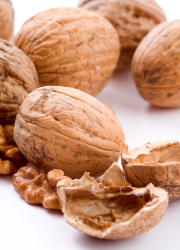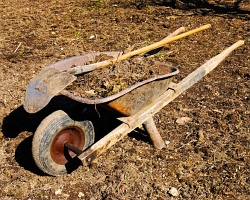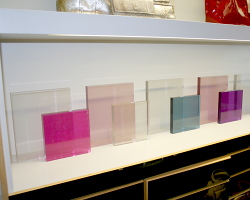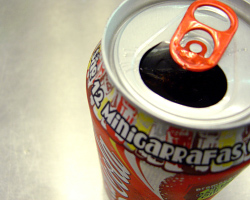 Yesterday, over on my new growing/cooking/making/frugal blog The Really Good Life, I discussed my love affair with slow rise/no knead bread. It’s really frickin’ ace – it doesn’t take much effort, reduces our food waste, is cheap in itself & stops us spending money in other ways too – and most importantly, tastes great. However, at the moment, we’re not making the best use of our oven while we’re baking it – meaning we’re wasting energy and therefore money.
Yesterday, over on my new growing/cooking/making/frugal blog The Really Good Life, I discussed my love affair with slow rise/no knead bread. It’s really frickin’ ace – it doesn’t take much effort, reduces our food waste, is cheap in itself & stops us spending money in other ways too – and most importantly, tastes great. However, at the moment, we’re not making the best use of our oven while we’re baking it – meaning we’re wasting energy and therefore money.
The recipe needs the oven to be hot (230C/450F/Gas mark 8) and in addition to the 40-50 minute cooking time, it needs to be well pre-heated (the cast iron casserole dish needs to be sizzling or the bread will stick) – so a lot of heat for a long time. We don’t generally eat enough bread to warrant making multiple loaves at once so I try to use the other space for other things. I’ve made scones/biscuits a few times and we nearly always have egg shells that need baking before crushing & returning to the chickens as grit.
Any other suggestions for things I could cook/bake alongside the bread? It’s not a huge oven and the casserole for the bread takes up quite a bit of space but there is a spare rack for things no more than 6cm/3″ high, a narrow strip next to the casserole, and the oven floor too.
(We usually bake mid-morning so we have cooled fresh bread for sandwiches at lunchtime. Since I’m usually working then, I don’t have a lot of time to make things from scratch and also it’s not a suitable time to make things that need to be eaten immediately after cooking. The oven is too hot for slow-cooking anything for lunch/dinner. Any suggestions would be welcome but suggestions taking these points into account would be especially great!)
Categories: reduce this
Posted by louisa
on 5 August 2010
 Echoing the pistachio shells that started this site, I was thinking about walnut shells recently.
Echoing the pistachio shells that started this site, I was thinking about walnut shells recently.
It’s advised not to compost walnuts/walnut shells because the trees contain a chemical called juglone, which is toxic to some trees, plants and vegetables (especially members of the Solanaceae family – aubergine, tomatoes & potatoes) so better safe and than sorry when it comes to composting them.
Walnut shells have a number of industrial uses – a thickener in the paints & plastics industries, as a filler in explosives, and for cleaning/polishing – but less re-uses in the domestic setting. I’ve used exfoliating soaps and cleansers with tiny walnut shell particles as the abrasive element so home soap makers could use them up – but what about other reuses?
Categories: food, items, packaging
Posted by louisa
on 4 August 2010
 So how is your garden/allotment/window box doing this summer?
So how is your garden/allotment/window box doing this summer?
Due to a combination of a underestimation of seed germination rates, disorganisation/ignoring plans and demon slugs, my growing hasn’t gone quite as I thought it might but we’re doing ok and I’ve learned a lot about growing here.
One thing definitely on my list for next year – well, technically later this year – is to give my beds a good old fashioned manure boost in late autumn. The soil here is very poor but since I reclaimed the beds from the weeds in early spring, I couldn’t do a manure feed this year and I think our output has suffered as a result. I’ve been feeding the seedlings/growing plants since then but I think better soil to start with would have helped overall. Ah well, live and learn.
Anyway, homemade plant/vegetable fertilisers. I’m sure everyone reading this has a bulging compost heap for general compost goodness (if not, start one today!) but I thought it might be interesting to hear what kitchen scraps/plants/garden waste/household waste people use for specific fertilising/feeding plants at this time of year.
I’ve been making/using a lot of liquid fertiliser from nettles this year because we have so many in the field next door to our house. Coffee grinds are also popular as a mid-season fertiliser, as are potash and bonemeal.
What are your favourite produced-at-home fertilizers? Do you have any tips for particular plants?
Categories: food, garden, hobbies, reverse this
Posted by louisa
on 3 August 2010
 We’ve had an email from Joe, who works for a fancy handbag designer with a number of select boutiques around the UK:
We’ve had an email from Joe, who works for a fancy handbag designer with a number of select boutiques around the UK:
I am trying to find a way to recycle these display Perspex props. We used them in lots of our London stores and have loads of them. Sadly they are mostly all damaged so I don’t think anybody else would want them.
I really don’t want to throw them away and am trying to find out what to do with them.
It is possible to recycle perspex (aka plexiglas, lucite or acrylic glass) but it’s not widely done post-consumer — I can only find details of a scheme which aimed at collecting offcuts & waste from perspex manufacturers. (In case anyone is interested, it was the Amari Recycling Initiative – does anyone know any post-consumer collection?)
Even damaged, the raw material might be usable by makers/crafters. Local art schools (or just the the art/design&tech depts of normal schools), hacker/maker groups (such as hackspaces) or scrapstores would probably all welcome the donation – and depending on the area/amount, might even be able to do a collection. Or someone on Freecycle/Freegle might want them too.
Any other suggestions for recycling/reusing them en masse? Or individual projects for small pieces of perspex?
Categories: business, items
Posted by louisa
on 30 July 2010
 We’ve had an email from Pauline:
We’ve had an email from Pauline:
I would like to use steel and aluminium cans to make jewelery. Do you know how to cut the metal out? Should the can be crushed first? Do you know how to smooth the edges so they don’t cut? If you could throw any light on this or point me to a website as I am not getting much coming up in google at the moment? Thanks.
I’ve made numerous things out of drinks cans (all aluminium I think) over the years and have mostly just used scissors for the cutting – it’s not as hard to cut as you’d think. I might use a can opener to remove the lid or a knife to start a hole in the body but then scissors suffice. I typically cut down the print “seam” and around the top & bottom to remove the curve so am left with a flat rectangle of metal.
(I’ve tried using shaped hole punches on cans but only lightweight ones so not had much success. Alison Bailey Smith has talked about the heavy duty ones she uses on plastic – I wonder if they’d be good on metal.)
And if the edges are smooth, not jagged, they’re also not as sharp as you might think. I’m not saying I’d necessarily want to wear them as jewellery in their nude state but in all my making, I’ve not once cut myself. Anyone got any tips for making the edges safer though?
Finally, anyone made any interesting jewellery from cans – or seen any inspiring examples of work around the wonderful worldwide web?
Categories: art & crafts using recycled stuff, packaging
Posted by louisa
on 29 July 2010
 Yesterday, over on my new growing/cooking/making/frugal blog The Really Good Life, I discussed my love affair with slow rise/no knead bread. It’s really frickin’ ace – it doesn’t take much effort, reduces our food waste, is cheap in itself & stops us spending money in other ways too – and most importantly, tastes great. However, at the moment, we’re not making the best use of our oven while we’re baking it – meaning we’re wasting energy and therefore money.
Yesterday, over on my new growing/cooking/making/frugal blog The Really Good Life, I discussed my love affair with slow rise/no knead bread. It’s really frickin’ ace – it doesn’t take much effort, reduces our food waste, is cheap in itself & stops us spending money in other ways too – and most importantly, tastes great. However, at the moment, we’re not making the best use of our oven while we’re baking it – meaning we’re wasting energy and therefore money.


 Echoing
Echoing  So how is your garden/allotment/window box doing this summer?
So how is your garden/allotment/window box doing this summer? We’ve had an email from Joe, who works for a fancy handbag designer with a number of select boutiques around the UK:
We’ve had an email from Joe, who works for a fancy handbag designer with a number of select boutiques around the UK: We’ve had an email from Pauline:
We’ve had an email from Pauline:














